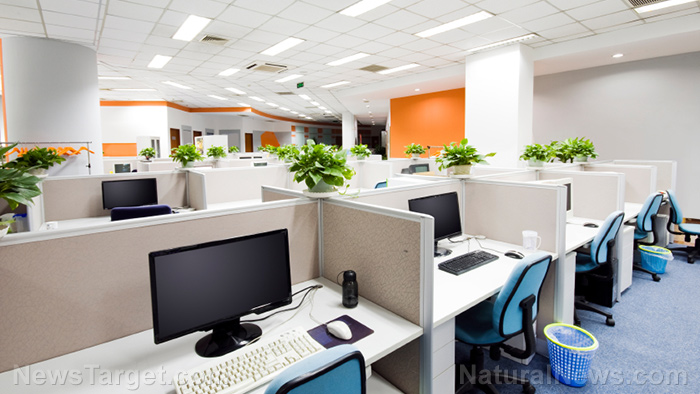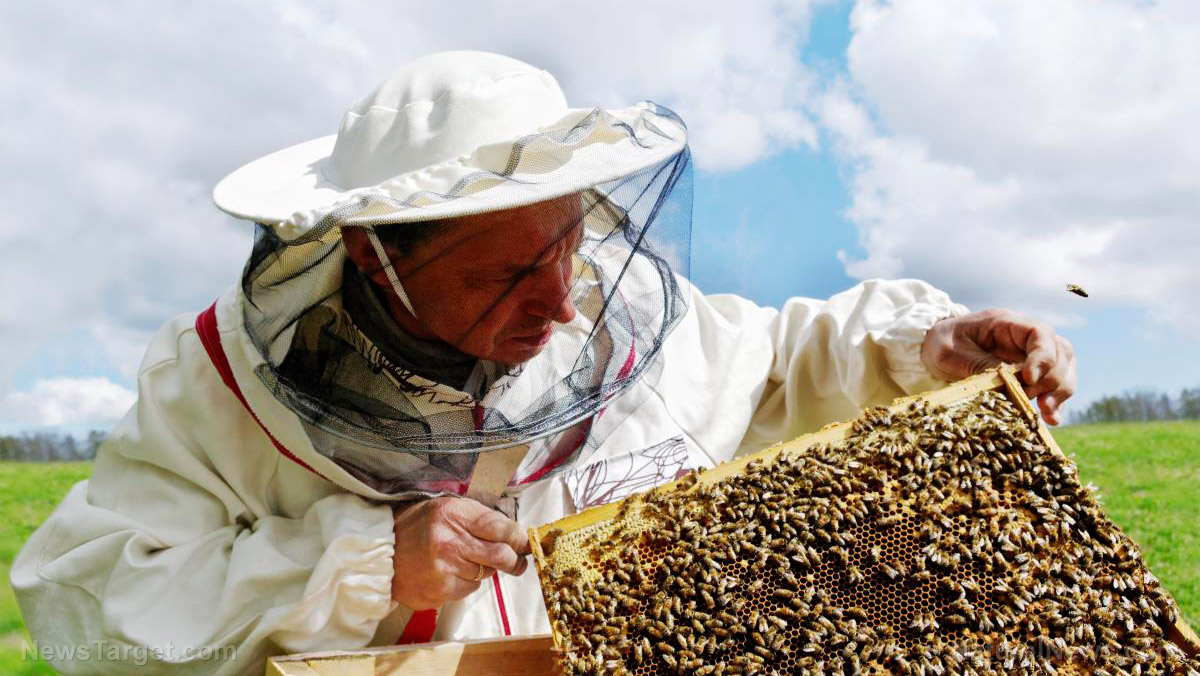Researchers rig a building with a thousand sensors to find out how chemicals from self-care products increase indoor and outdoor pollution in offices
10/05/2020 / By Virgilio Marin

The mere presence of a person in the office may be contributing to air pollution indoors and outdoors, suggested a recent study presented at the American Association for Aerosol Research Conference in Oregon.
A group of researchers planted sensors in the Living Labs office spaces at Purdue University and found that people could significantly impact the air quality indoors through the use of self-care products, as well as just breathing. Such products and processes emit chemicals that get filtered out by ventilation systems, potentially contributing to outdoor pollution.
Humans are top contributor of chemicals in the air
Living Labs, considered “the ultimate laboratory for human-building interactions,” is equipped with one thousand sensors that monitor the flow of indoor and outdoor air in four open-plan office spaces. In addition, the researchers also rigged each desk chair with a set of sensors that could sniff out compounds emitted by office occupants, such as isoprene from human breath, in real-time.
“The chemistry of indoor air is dynamic. It changes throughout the day based on outdoor conditions, how the ventilation system operates and occupancy patterns in the office,” said co-researcher Brandon Boor, an assistant professor of civil engineering at the university.
Boor’s team found that human beings were the dominant source of volatile organic compounds (VOCs). According to the National Library of Medicine, these chemicals are released from consumer products, such as cosmetics, copy machines and printers, air fresheners, dry cleaning fluids, pesticides, building materials and cigarettes.
The researchers identified isoprene and many other chemicals and found that levels of many VOCs were 10 to 20 times higher indoors than outdoors. They added that these chemicals would linger even after people left the room. If a room wasn’t well-ventilated, VOCs could adversely affect human health and worker productivity, Boor added.
The team also uncovered what could happen when ozone, a gas that’s present in the atmosphere and can be damaging to the lungs, entered the room. When ozone interacted with monoterpene, a compound released from peeling an orange, the two mixed to form potentially toxic particles that were small enough to reach the deep recesses of the lungs.
But similar harmful processes might also occur outdoors. The researchers said that chemicals released from self-care products, such as makeup, deodorant and hair spray, might elevate levels outside through the ventilation system that would filter out these substances.
Fresh air can boost cognitive performance
The findings of the study could help employers provide better air quality for office workers in order to improve their productivity. As Boor said, “it is important to first understand what’s in the air and what factors influence the emissions and removal of pollutants.”
In fact, a recent study suggested that stale office air decreases a worker’s cognitive performance. Researchers from Harvard University, Syracuse University and the SUNY Upstate Medical University enlisted “knowledge workers” such as managers, architects and designers and put them in a simulated work environment over a two-week period. The participants were asked to do their normal work routine from 9 a.m. to 5 p.m. Meanwhile, the researchers changed the air quality during the study period without informing the participants.
Results showed that the participants had higher test scores across nine cognitive function domains when they were exposed to increased ventilation rates and lower levels of VOC and carbon dioxide. The biggest improvements were in areas involved in strategic decision-making, a skill that’s valorized in the knowledge economy. (Related: Solutions for toxic indoor air pollution.)
The findings of the study were telling; the team took pains to make sure that the poorest air quality conditions are modeled after those of standard office buildings. Speaking about what action office managers should take, study researcher Joseph Allen wrote, “The first step is to look at your air quality indicators and see whether there’s room to improve.”
Products.news has more on unlikely consumer products that may be polluting the air.
Sources include:
Tagged Under: chemicals, cognitive function, cognitive performance, Cosmetics, indoor air, lung health, office, ozone, personal care, products, sensors, Toxic, toxic products, toxins, volatile organic compounds


















